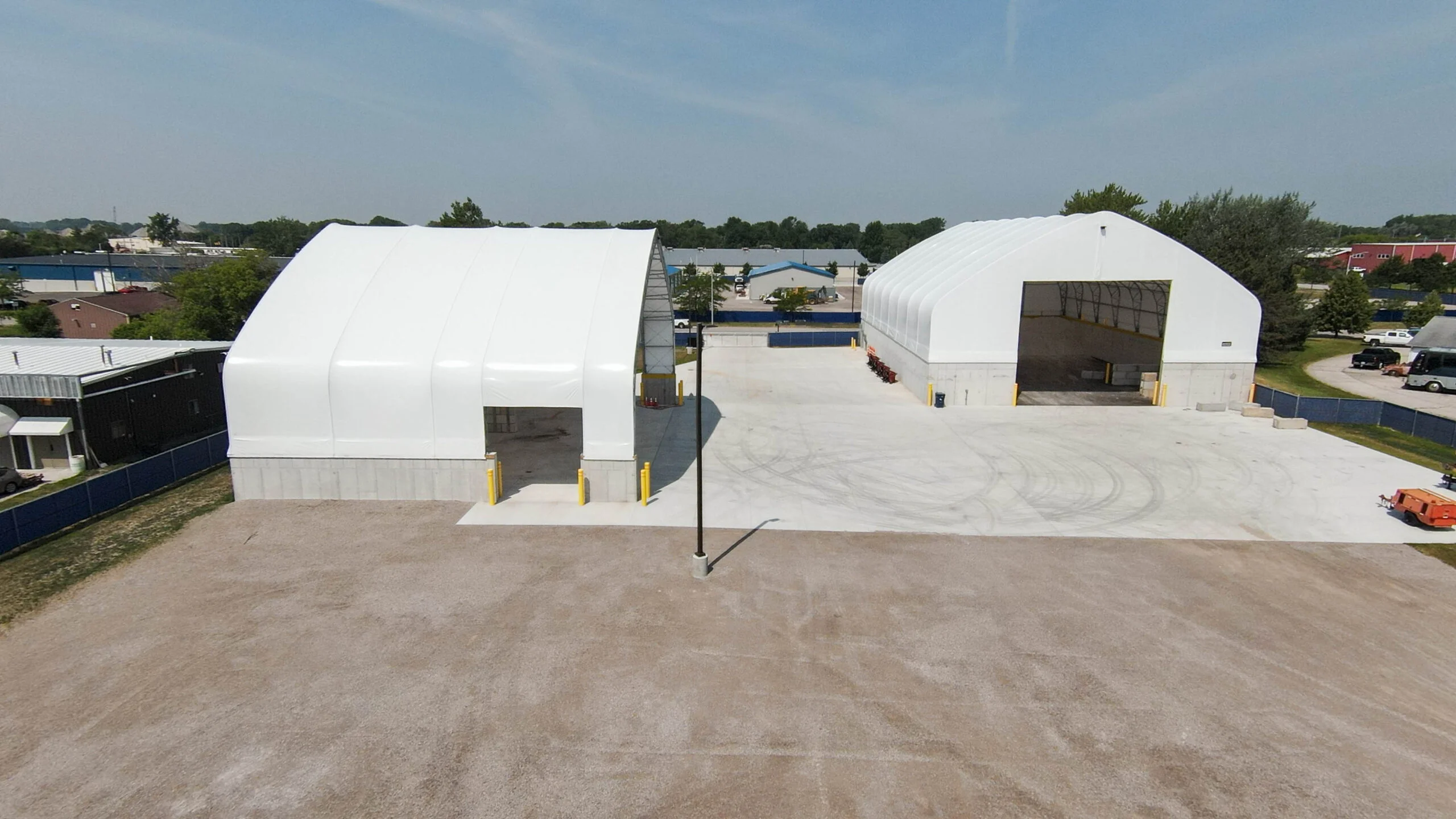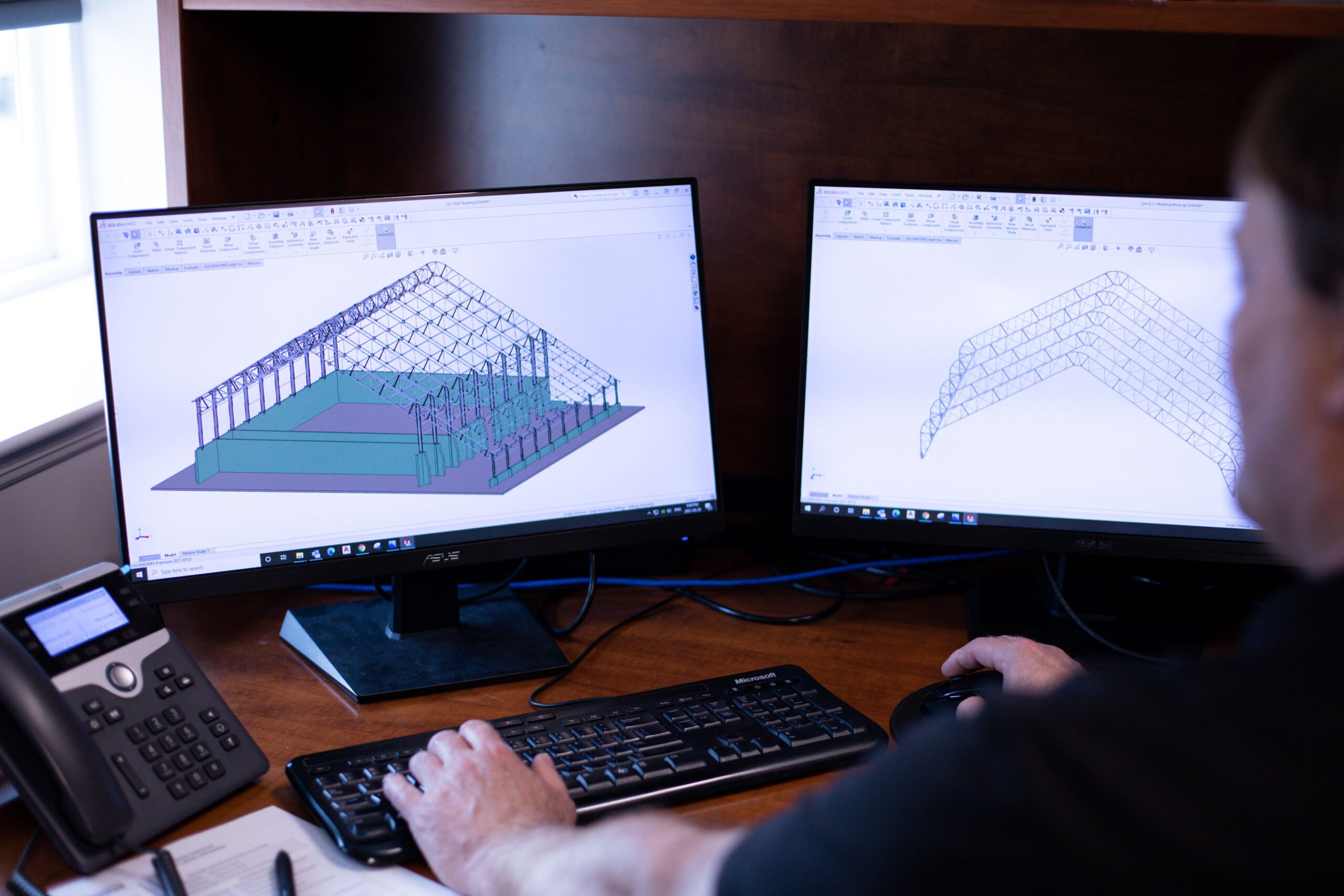How to Build a Fabric-Covered Composting System for Your Business Waste

As a business, you know the importance of reducing costs, improving reputation, and being a strong advocate for the community and the environment. Consider the value of business waste management strategies that can support all of these areas. It’s no longer ideal to simply toss material that could be composted into the landfill, but you could turn around the use of those materials to support community-wide efforts. A fabric-covered composting system makes that possible.
At Britespan, we offer the type of solution you need. Once you see the benefits of a fabric building and just how effective it can be to put one up to provide this critical service, you may be excited to move forward. Let’s explore how to build a fabric-covered composting system.
Understanding the Environmental Needs of Effective Composting
Before moving into why fabric-covered composting systems work the best, consider what it takes to have a successful composting environment on a large scale. Successful composting requires careful consideration of:
- Temperature: Proper temperature enables conditions to be optimal for breaking down waste at a steady pace without creating the risk of unsanitary conditions. The ideal temperature for most areas should be between 90 and 140 degrees, which helps ensure rapid decomposition.
- Moisture levels: Depending on the type of product, moisture levels must be optimized. Moisture is critical to the process, but too much can lead to limitations and complex concerns. When possible, aim for between 40% and 60% by weight. If moisture is lower than this, microbial activity is too limited, but higher than this can create odors.
- Oxygen flow: Another critical component is ensuring proper airflow. Ventilation helps speed the decomposition and reduces the risk of unhealthy gases, which can cause dangerous conditions for workers.
- Carbon-to-nitrogen ratios: Aim for the right ratio of carbon to nitrogen to support composting. Generally speaking, this should be 30:1, meaning that for every 30 parts of carbon, 1 part of nitrogen is present. This supports microbial activity and aids in faster decomposition.
When you plan to invest in commercial composting solutions, the structure you build must meet these conditions. You certainly could create a traditional hard-sided building, but that takes far more careful management of conditions, and often requires ongoing costs to maintain that structure. That is where fabric municipal buildings become a viable solution. Fabric commercial buildings are easier to maintain and can offer a natural environment that is ideal for commercial compost.
Why Traditional Buildings Often Fall Short for Composting (And How Fabric Structures Provide Solutions)
A traditional building makes commercial composting more difficult, and without any real benefit. Consider some of the reasons why a fabric structure composting solution is a better fit.
- The risk of corrosion. One of the most concerning problems with these structures is corrosion. When they break down, they create unsafe conditions for composting within them.
- Humidity control is challenging. Humidity is not the friend of any traditional structure. In general, traditional buildings need a very low level of humidity. That is not conducive to the necessary higher amounts of moisture to support decomposition (and controlling humidity in such an enclosed environment is also challenging).
- Ventilation complications. Another ongoing concern is ventilation in traditional buildings. You can support any ventilation need, but getting it right can be costly and challenging.
As you consider how to build a fabric-covered composting system, realize the core benefits. Fabric supports the ideal breakdown of organic waste. It’s natural – the climate is far more nature-based, and that means decomposition happens without as much careful control over the environment.
Fabric buildings are designed to enable proper moisture control, excellent ventilation, management of sunlight and temperature, and highly efficient function. You can still control as much of the interior space as you would like to, to the level needed, but you don’t have to invest in costly composting monitoring systems as you would in traditional buildings. With commercial compost, you get a much different outcome from fabric.
Distinct Advantages of Fabric Buildings for Commercial and Municipal Composting
Why a fabric-covered composting system? Take into consideration some of the key benefits of incorporating sustainable composting with fabric structures into the way you are working to manage your business waste.
- Steel frames and fabric covers create the non-corrosive environment needed to support these environments. One of the benefits of a fabric building is that there’s less risk of corrosion that increases costs or impacts the ideal environment.
- Manage odors and conditions with natural ventilation. When you consider these building structures, natural airflow and proper oxygen management are effortless. This supports the ongoing needs of a composting environment without costly and difficult-to-manage mechanical ventilation.
- Speed of construction: When municipal composting solutions need to be implemented, you do not want to wait years for such processes to happen. With fabric-covered computing systems, you do not have to. They can go up quickly and start functioning immediately.
- They are cost-effective compost systems for businesses. Compared to traditional buildings, they are cost-effective to put in place, manage over time, and maintain long-term (in fact, they can last decades with good reliability and little upkeep). This helps make them one of the ideal solutions for commercial building needs.
Explore the Options Available at Britespan
A fabric-covered composting system can offer you the exceptional results you need. Choose from a range of options, including our Apex Building Series and the Genesis Building Series, which are some of the best for composting setup and management. Notice, for example, the strength of the Apex Building Series, which allows it to maintain a stable environment for years to come, making composting effortless over the long term.
Learn more about our solutions and find the right fabric-covered composting system for your business applications. Contact the Britespan team for more help selecting the right structure based on your needs.

